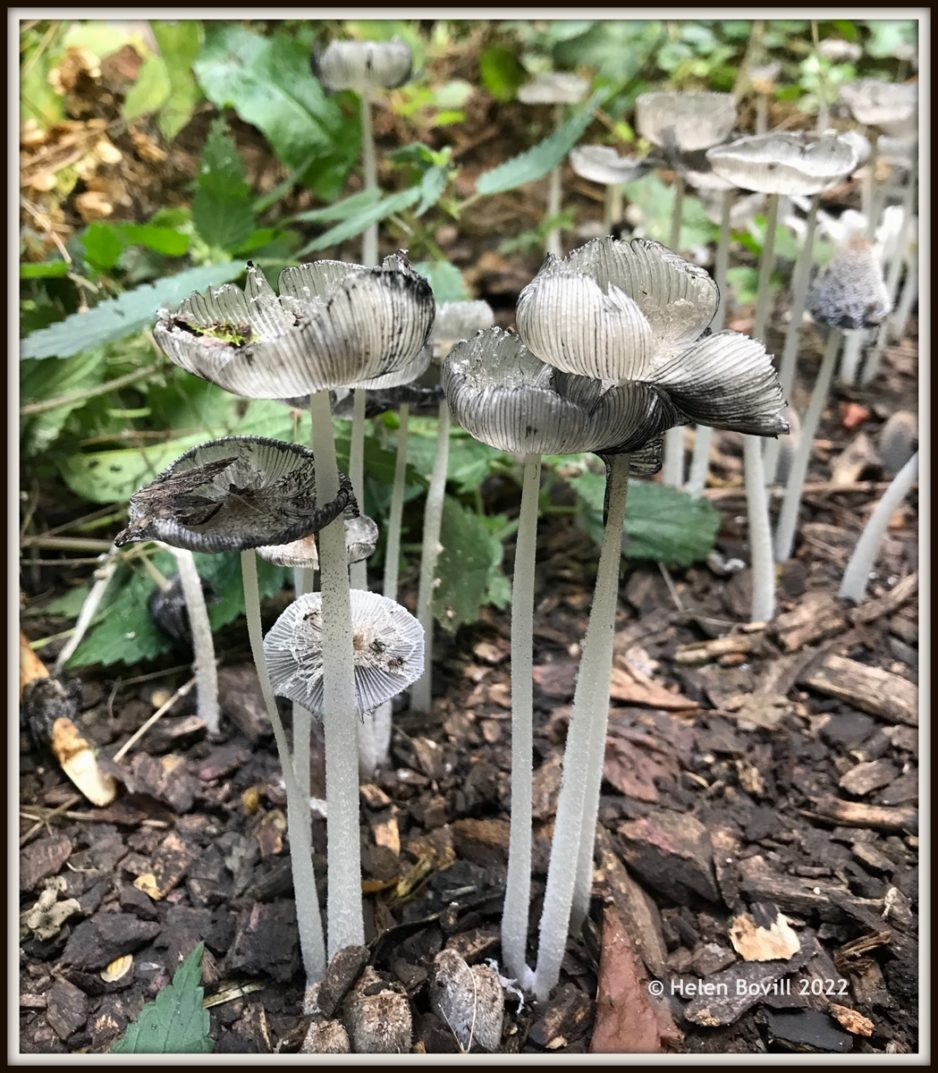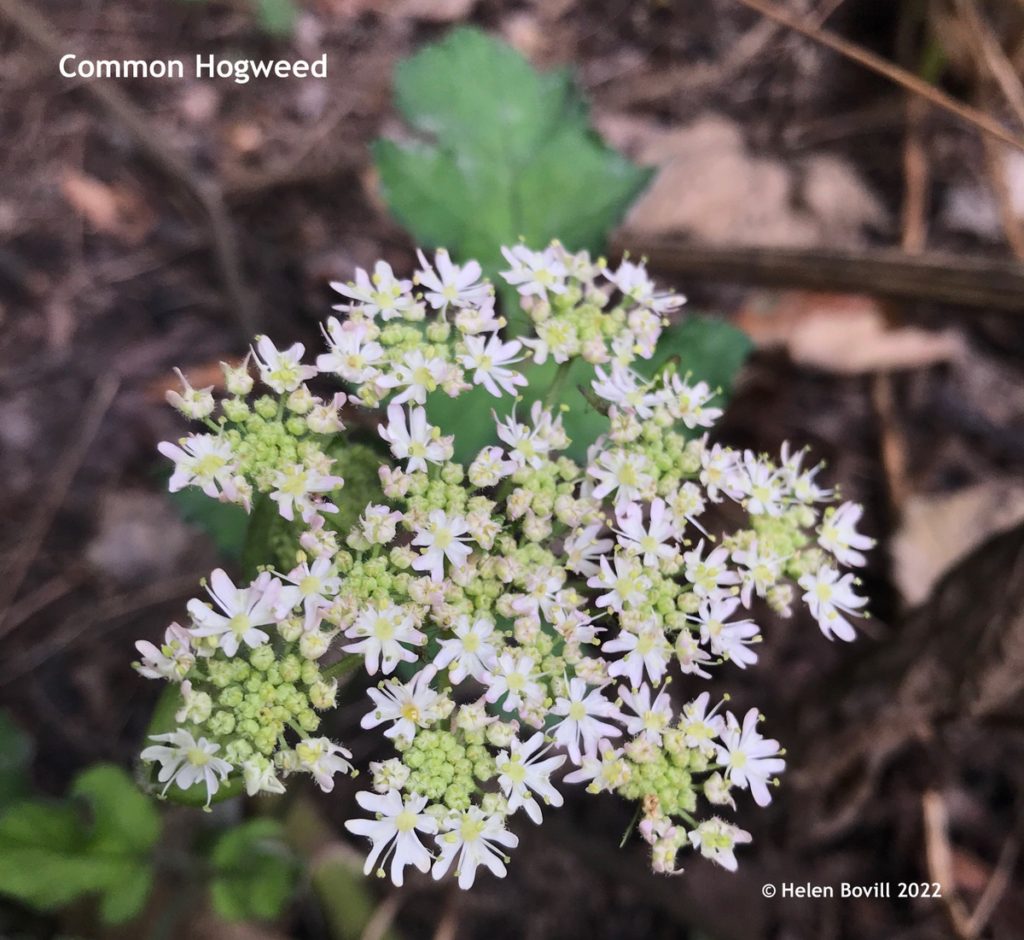The very warm dry weather of the last month continued throughout the first half of August and this included another heatwave. The temperatures didn’t quite reach the record ones set in July but it was still very hot and dry. As a result, the grass verge alongside Spring Bank West is looking parched and dry and not ideal for the cemetery wildlife. I found very few wildflowers growing there as most of the plants have died and no fresh ones have sprouted up to replace them.
Mushrooms
I’m starting this month’s report with fungi for a change, because on the very first day of the month I saw a small group of Hare’s foot Inkcaps (pictured above). These delicate little beauties last for less than 48 hours, so I was very lucky to catch them when I did. The ones in the photo have just started to decay, hence their curling up at the edges and starting to turn inky black. At the bottom of the photo are some new mushrooms just starting to emerge. This is how they get their name, because these new “buds” are said to resemble a hare’s foot.
I also spotted a much more robust species – the Dryad’s Saddle – earlier in the month. Its condition has now deteriorated, having been partially eaten by the cemetery wildlife. But in its prime I watched it releasing some tiny spores, like very faint smoke drifting in the air. This is the underside of one of those deteriorating mushrooms.
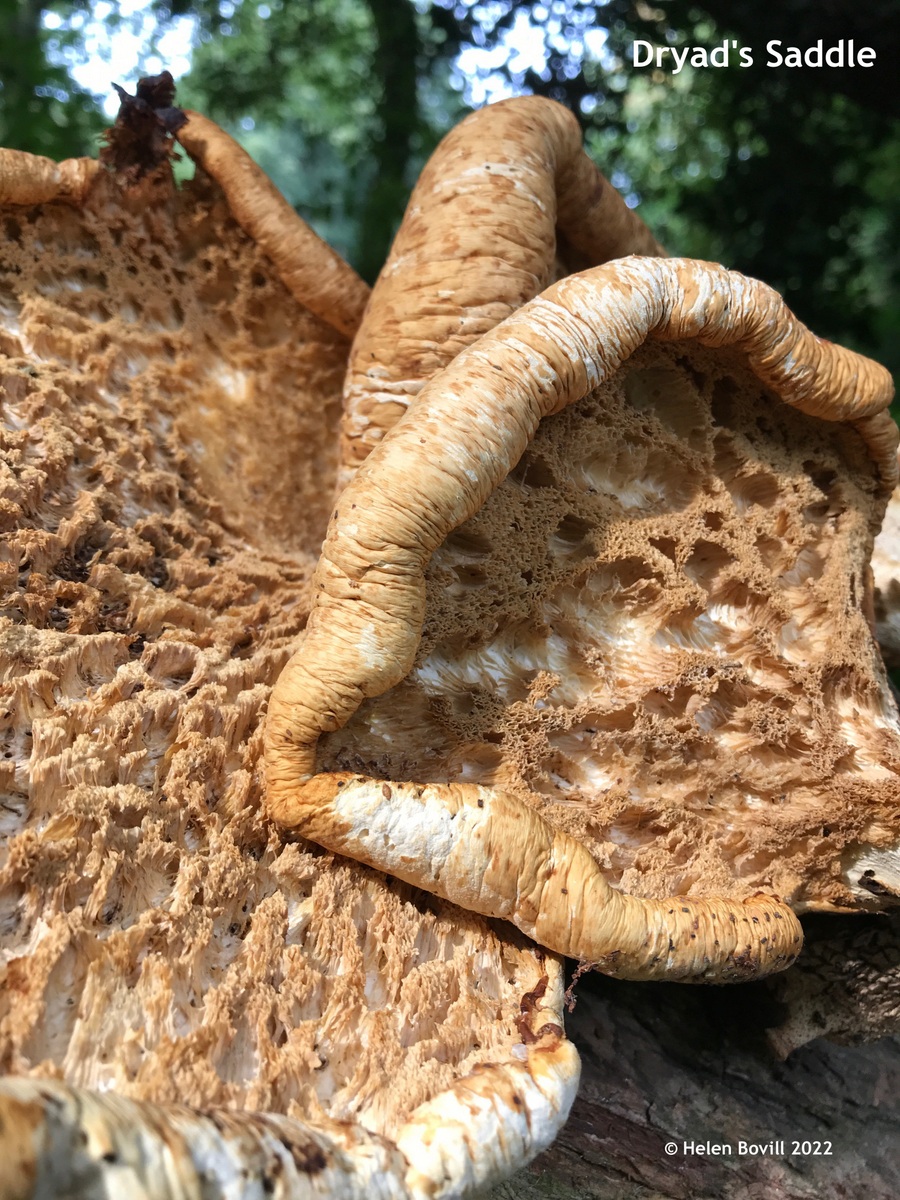
Butterflies and Insects
I noticed quite a few dragonflies in the air over various parts of the cemetery and also over the planted areas behind Thoresby Street school. However they were quite high up and none of them landed so I’m unable to say which species they were.
I saw several white butterflies in flight, and managed to identify at least some of them as Green-veined Whites. But the commonest and easiest to identify at this time of the year is the Speckled Wood. I saw several of these throughout the month.
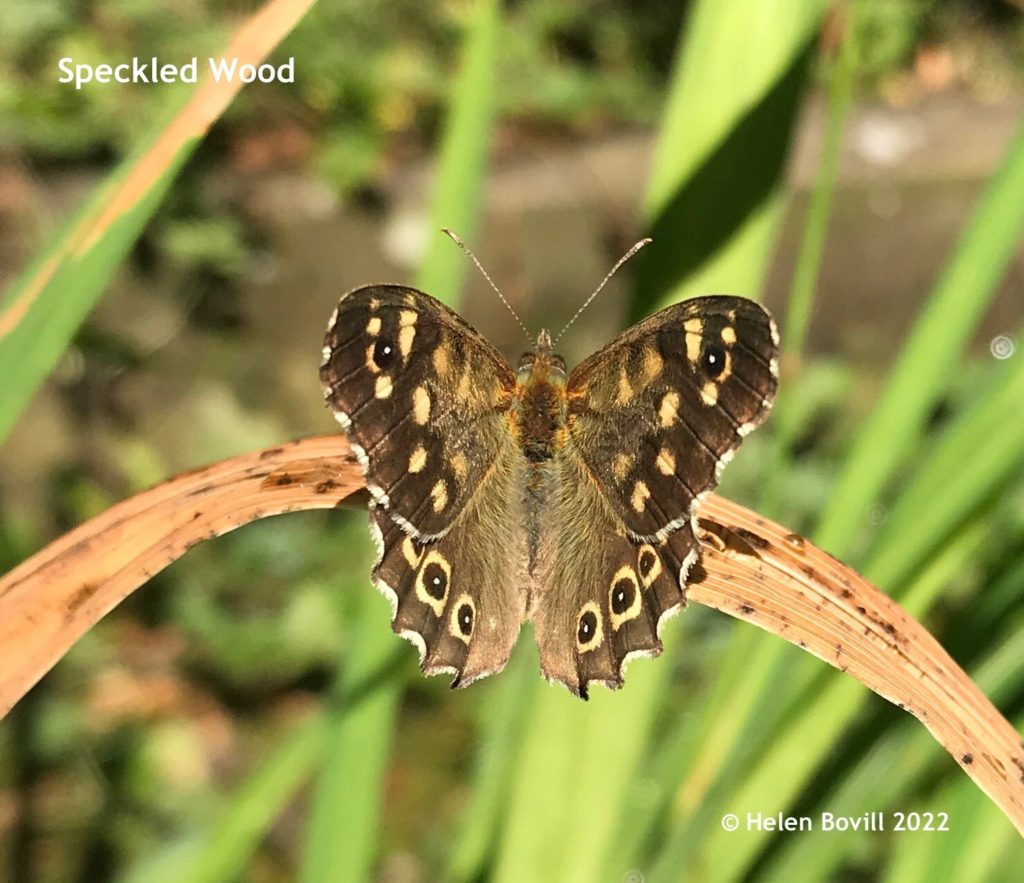
I also caught brief glimpses of lots of newly-emerged Holly Blue butterflies this month. These will most probably be the second brood of the year. They fly quite high in the air, looking for a mate. Once mated they will then lay their eggs on Ivy flower buds. I also saw some Bees, Hoverflies and Ladybirds in and around the Cemetery.
Birds
I caught a couple of brief glimpses of some Bullfinches – a male and a female – but unfortunately I didn’t manage to get any photos. But a Goldfinch pair I’ve been watching throughout the month have successfully raised two young.
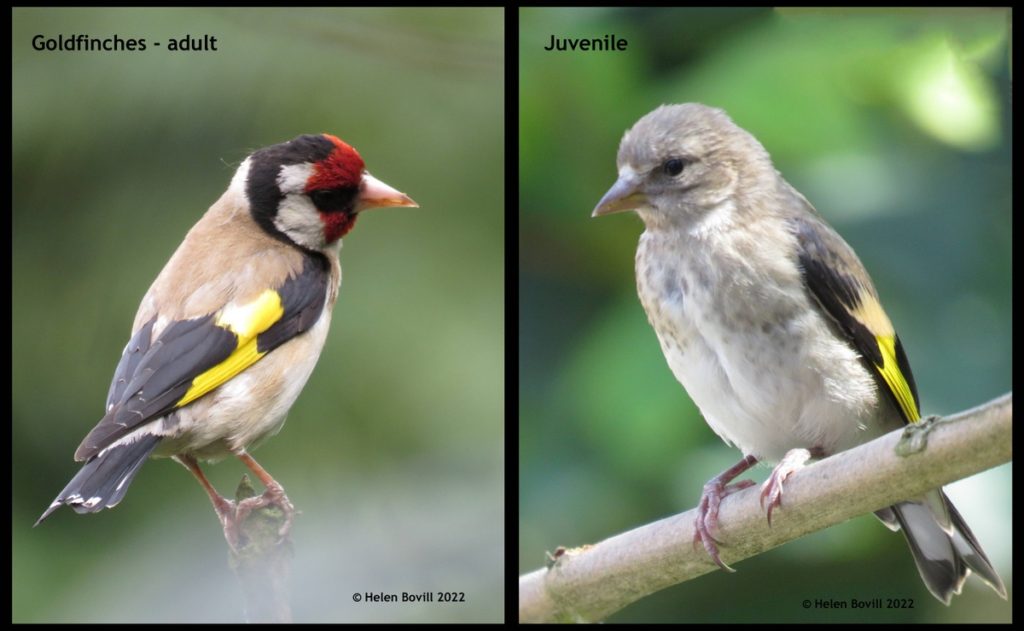
A Sparrowhawk was seen by one of the volunteers, and I’ve also heard at least one Tawny Owl calling on a number of occasions.
I’ve seen good numbers of Blue Tits and Great Tits, both adults and fledglings. The most common finch in the Cemetery is the Chaffinch and there are several pairs and youngsters around. There are always several Robins around, and I’ve seen young of theirs as well. There are several pairs of Blackbirds in the cemetery, also with fledglings. It’s been a good year for all these species.
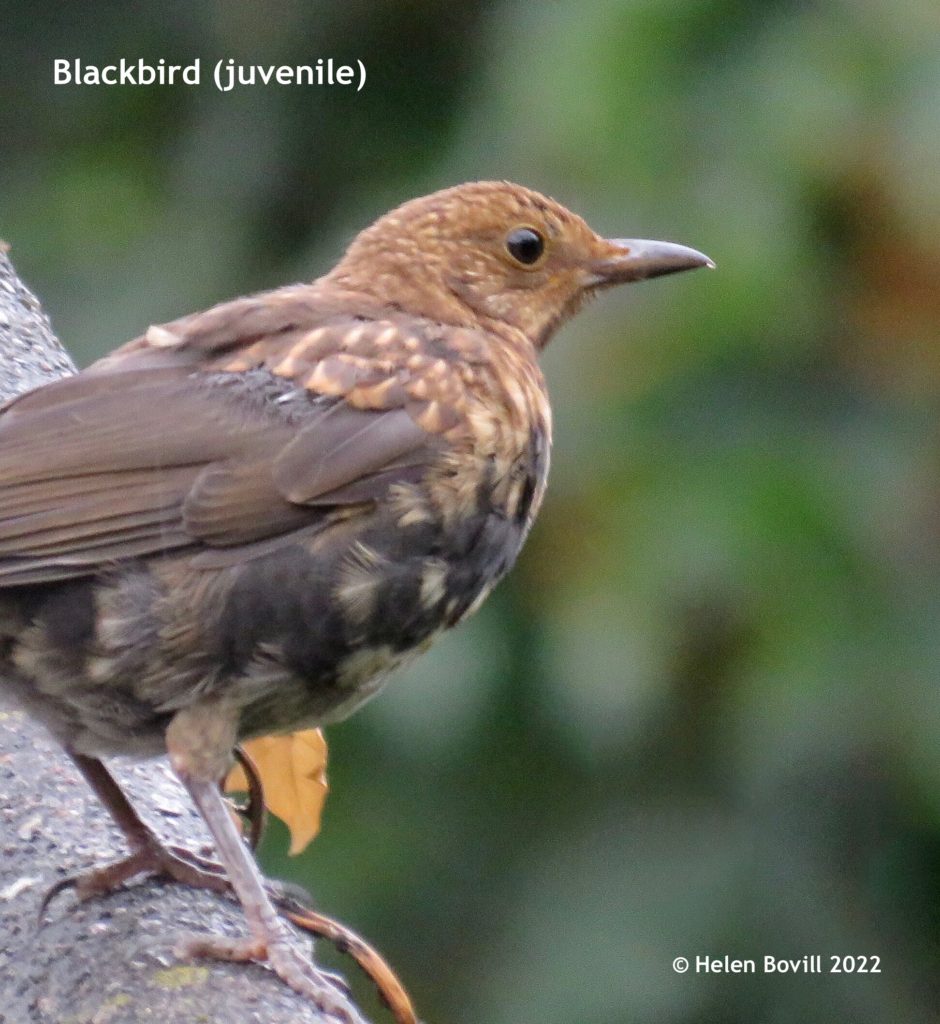
Trees and Flowers
Back in March last year the volunteers planted three Silver Birch trees at the eastern end of the cemetery. I’m pleased to report two of the trees are thriving and have catkins on them. This is a monoecious species, meaning the tree contains both male and female catkins and can therefore produce its own seeds without the need for cross-pollination with another tree.
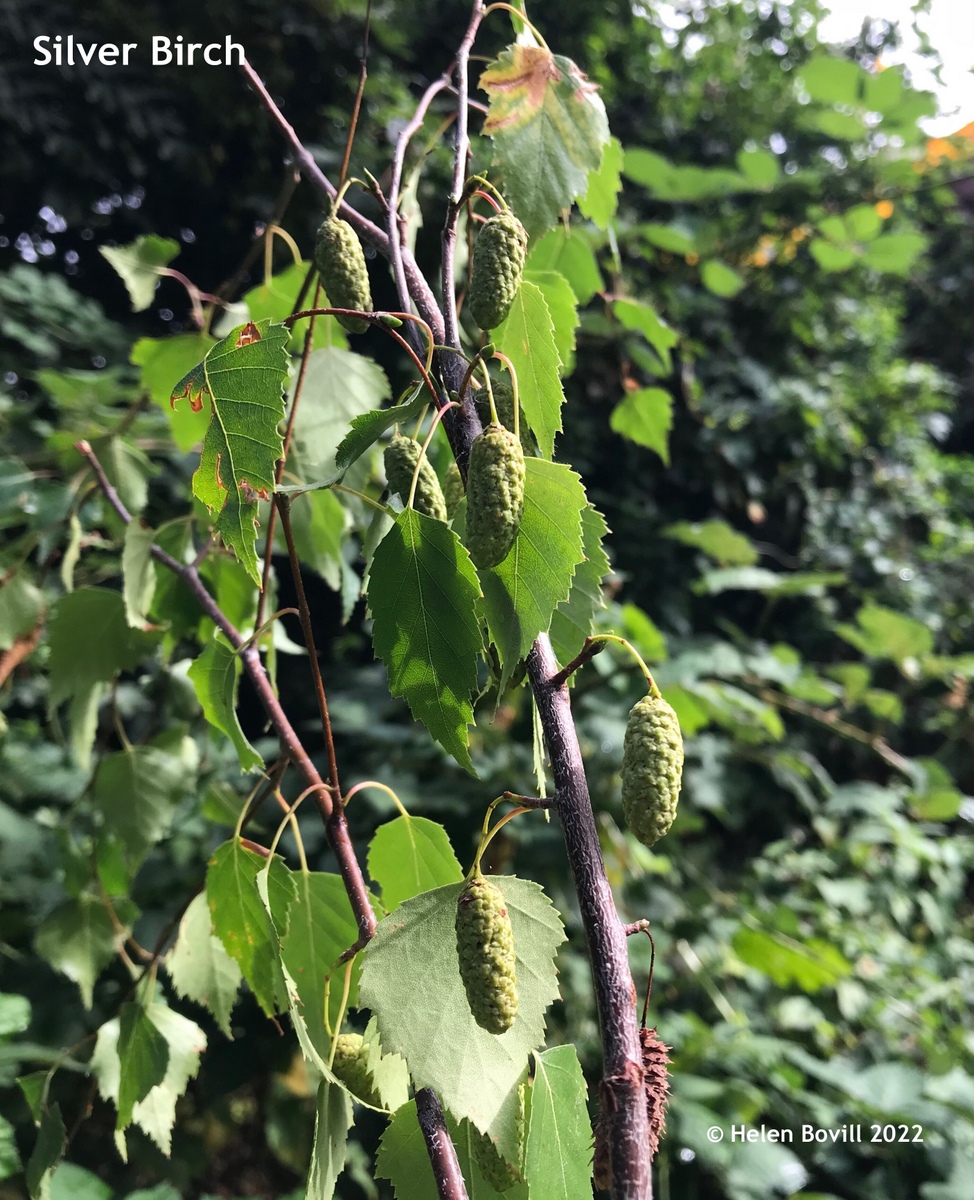
The hot dry weather has meant some of the trees have started to lose their leaves earlier than usual. Some of the medium sized trees are already bearing ripe fruit, such as the Elderberry and Dogwood. Both these types of berry are an important source of food for the cemetery wildlife, especially the birds.
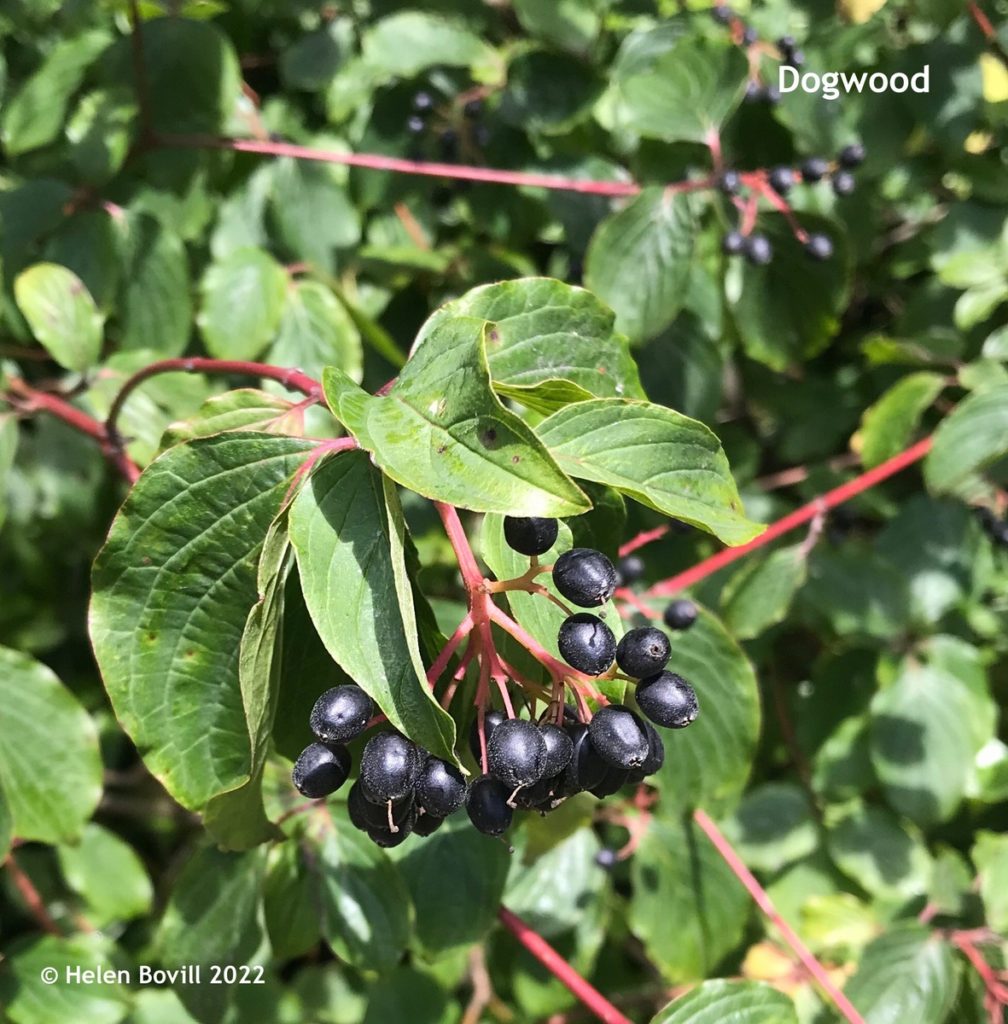
As already mentioned, there are hardly any flowers growing on the grass verge other than a few Dandelions. A few plants inside the cemetery are still flowering, with the Great Willowherb adding a splash of welcome colour in the centre of the cemetery.

I also managed to find a few plants with clusters of small white flowers on them. They can be difficult to identify, all looking very similar at first glance. However, one should never assume they are just Cow Parsley, by far the most prolific of the white-flowering plants in and around the Cemetery! In any case their flowering season ended in July. This month I found Upright Hedge-parsley, Wild Carrot and Common Hogweed growing in various places.
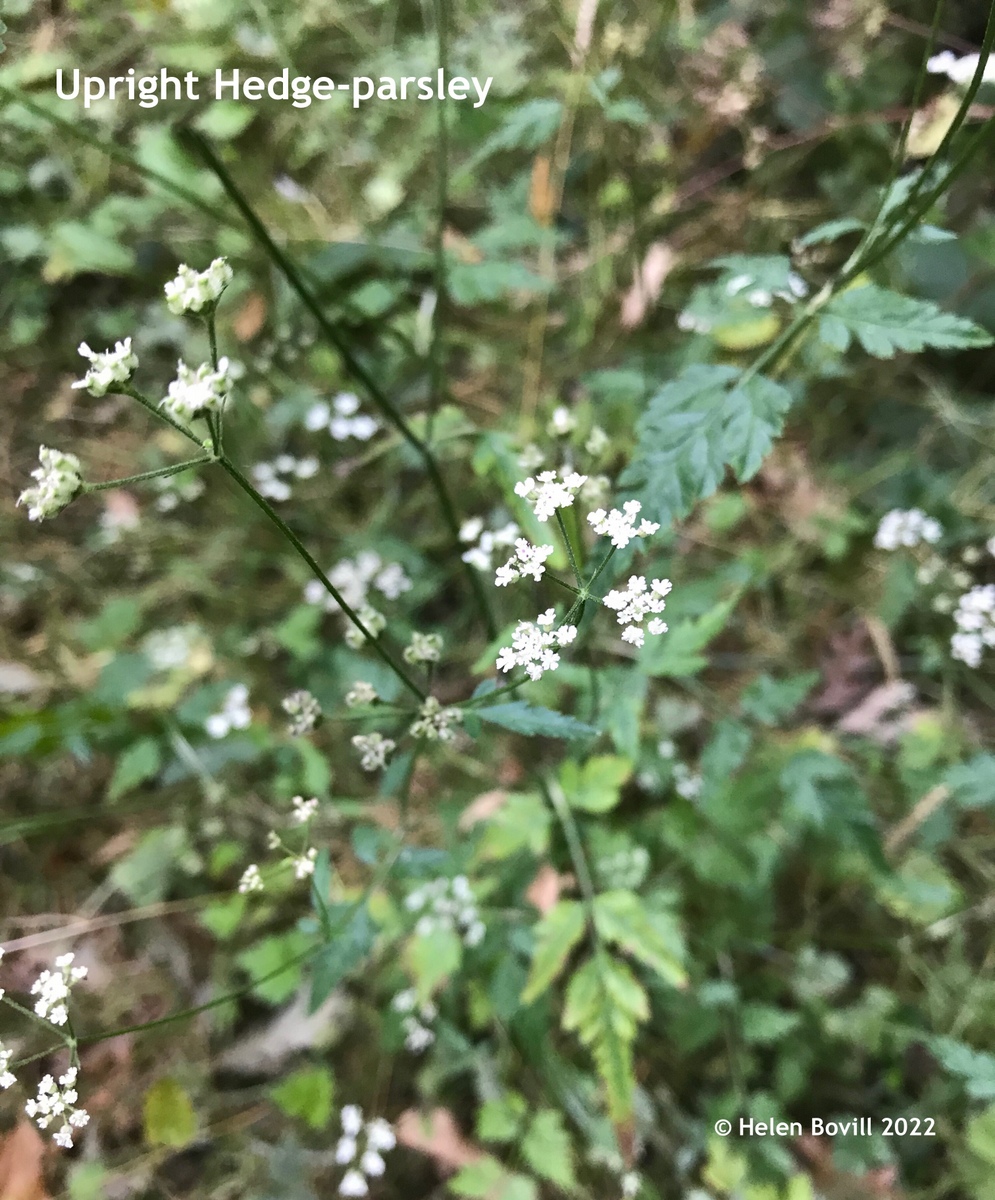
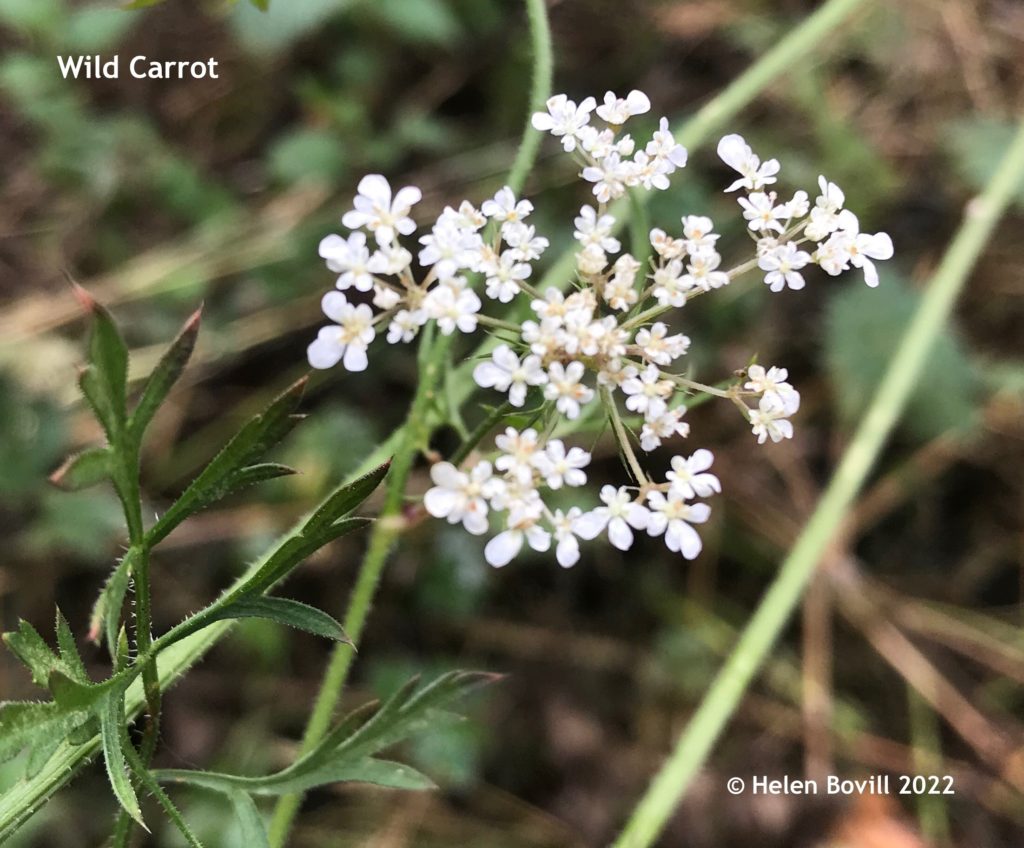
Conclusion
August started off hot, dry and sunny with a heatwave in the middle of the month. Then it got cooler and there were a few days with intermittent rain showers. The heaviest of the rain fell in the last week but at best it simply left the footpaths rather damp. The Cemetery was not affected by the flooding that other parts of the country suffered. It’s too early to say whether or not the rainfall was sufficient to enable fresh growth, especially along the grass verge. The rain was certainly good for the cemetery wildlife though!
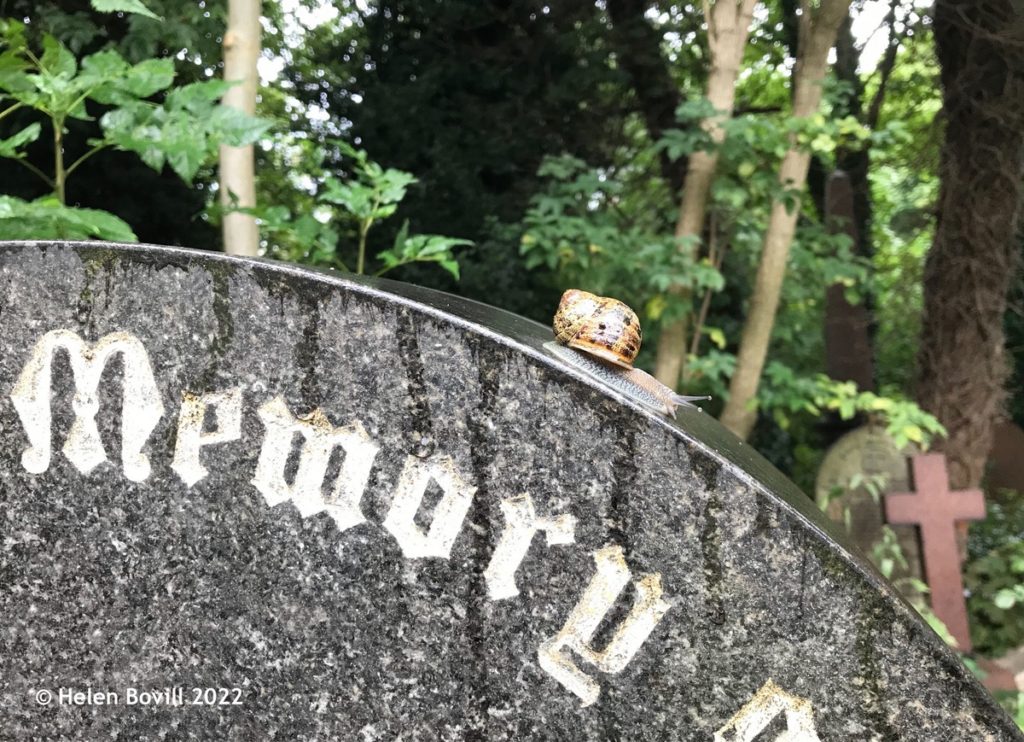
Snail and headstone on a rare rainy day!
An interesting article about trees:-
https://friendsofhullgeneralcemetery.com/tree-hugging/
And a useful site for wildflower identification:-
https://wildflowerfinder.org.uk/


